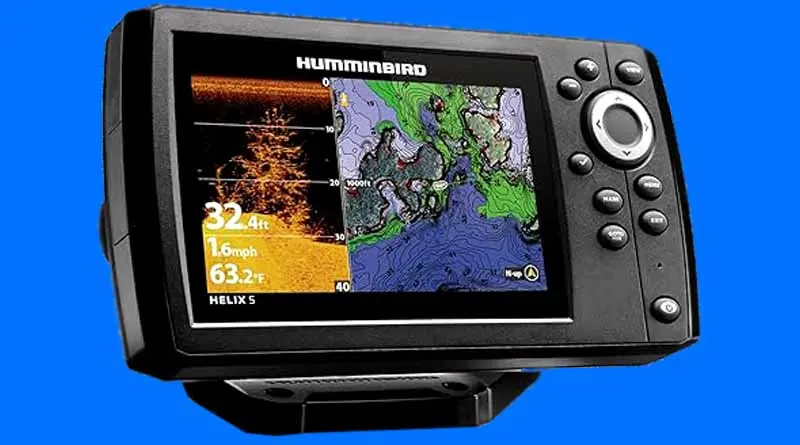
How Do I Use a Fish Finder?
The modern way to find a great fishing spot!
Out on the vast, shimmering lake, with the gentle hum of the boat’s engine in the background and the crisp morning air brushing against my face, a question often pondered by both novice and seasoned anglers alike surfaced in my mind: “How do I use a fish finder?” This remarkable piece of technology, when mastered, can transform the art of fishing into a science of precision and success.
Understanding Fish Finders
Delving into the world of fish finders opens up a realm where technology meets tradition in the pursuit of a bountiful catch. A fish finder, essentially an echo-sounding system, utilizes sonar technology to provide a visual representation of the underwater environment, which is invaluable for any angler.
Components of a Fish Finder
A typical fish finder setup comprises several key components:
- Display Unit: This is the fish finder’s interface, where the data collected by the transducer is visually displayed. It can range from simple black-and-white screens to advanced, high-definition color displays.
- Transducer: The core of a fish finder, the transducer, emits and receives sonar waves. When these waves hit objects underwater, like fish or the bottom, they bounce back to the transducer, which then converts them into electrical signals that are displayed on the screen.
- GPS Integration: Modern fish finders often integrate GPS technology, enhancing navigation and mapping capabilities. This allows anglers to mark productive spots and navigate back to them easily.
Types of Fish Finders
Fish finders vary widely in complexity and functionality:
- Standalone Fish Finders: These are basic units ideal for beginners, primarily displaying fish icons and simple depth readings.
- Combo Units: These devices combine sonar with GPS technology, offering both navigation and fish finding capabilities.
- Networked Systems: Advanced setups that integrate multiple displays, radar, GPS, and data inputs from various sources, suitable for serious anglers who need comprehensive information.
Challenges and Options in Using Fish Finders
Technological Complexity
The variety of settings, frequencies, and sonar options can overwhelm many users, especially those new to using fish finders.
Interpreting Data
Decoding what appears on the display is critical. For instance, understanding that certain shapes and colors represent different sizes and types of fish is essential for making informed decisions about where to fish.
Integration with Fishing Techniques
Incorporating a fish finder into existing fishing strategies effectively remains challenging for many. It requires understanding both the tool and the tactics to optimize its use.
Best Usage Practices
Setting Up the Fish Finder
- Mount the Transducer: This should be done where there is direct contact with water—commonly on the transom, the hull, or attached to a trolling motor—to ensure accurate data transmission.
- Configure Settings: Adjust the fish finder settings based on the fishing environment. Lower frequencies (50 kHz) are better suited for deeper water as they penetrate deeper but provide less detail. Higher frequencies (200 kHz or more) are optimal for shallow water, offering finer detail.
Reading the Display
- Identify Fish Arches: Recognizing arch shapes on the screen is crucial, as these indicate fish. The fullness and height of the arch can help gauge the size of the fish.
- Understand Depth and Terrain: The ability to read the contours and depth of the water body helps in selecting the best fishing spots, avoiding potential hazards, and understanding the environment where fish are likely to be.
Integrating with Fishing Tactics
- Locate Structures: Using the fish finder to identify structures such as wrecks, rocks, and submerged objects is key, as these are often habitats for fish.
- Track Bait Fish: Finding schools of bait fish is often a precursor to locating larger predatory fish. A fish finder can significantly aid in this pursuit.
Mastering the use of a fish finder is about blending technological savvy with angling knowledge. This powerful tool, when used effectively, not only enhances the fishing experience but also increases the likelihood of a successful outing, making every trip a potential adventure of discovery and achievement.
Essential Tools and Resources
Using a fish finder effectively requires certain tools and resources to ensure the best results:
- High-Quality Fish Finder: Choose a model that suits your specific fishing needs and budget.
- Comprehensive Manual or Guide: Utilize the manufacturer’s manual or seek out online tutorials and guides to better understand your device.
- Hands-on Practice: Spend time on the water using the fish finder in various conditions to gain experience.
As the day wore on and the sun climbed higher, the echoes from my fish finder painted a vivid picture of the world beneath the waves. This device, once an enigma, had become an indispensable part of my fishing expeditions. Mastery over this modern tool didn’t just enhance my catch; it deepened my connection with the water, marrying technology with the ancient art of angling. In the digital blips and bleeps, I found not just fish, but a new way to see beneath the surface, transforming every outing into an adventure of discovery.






